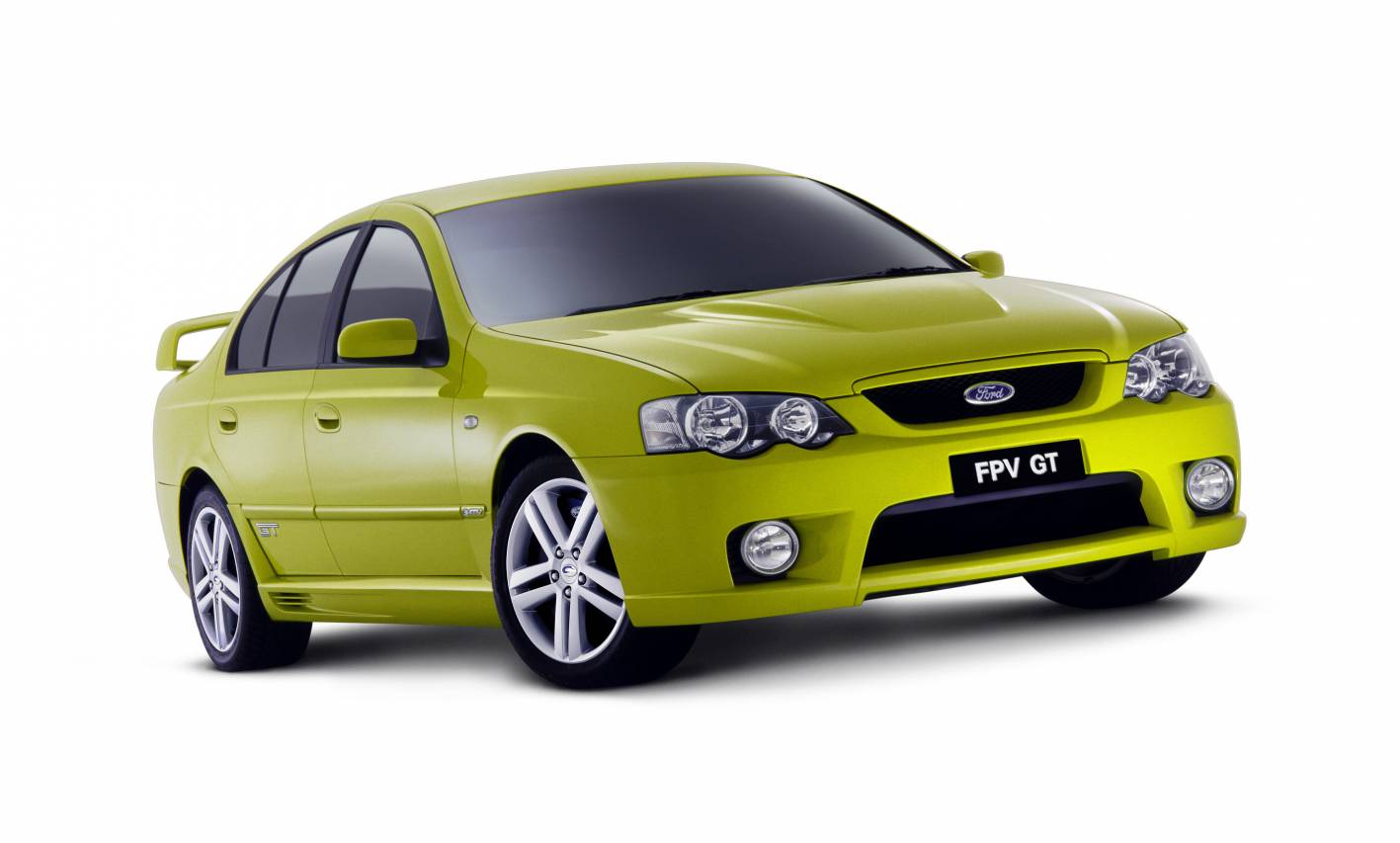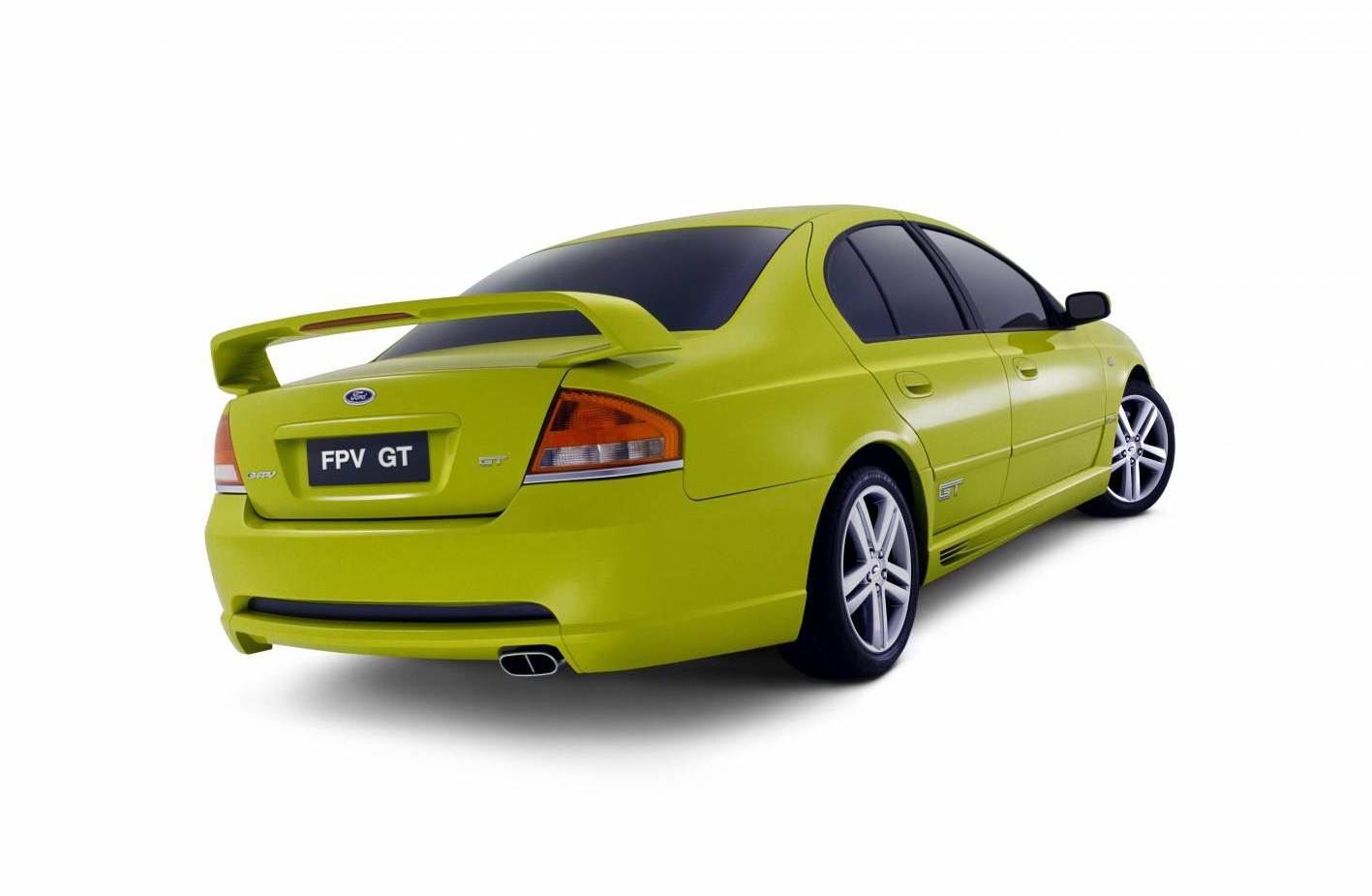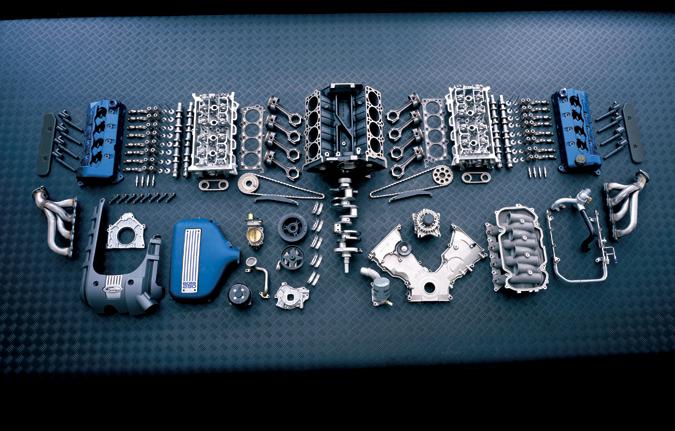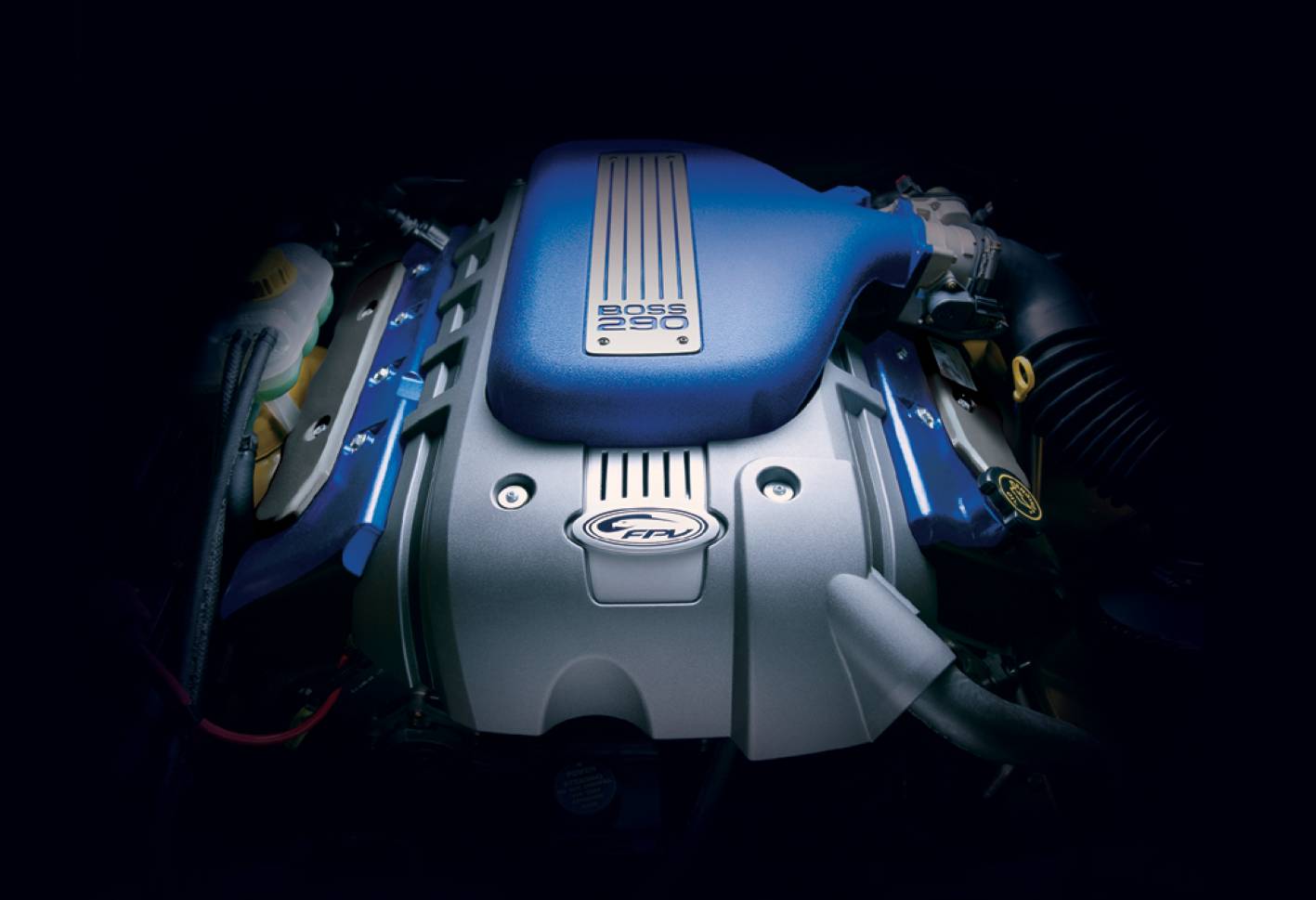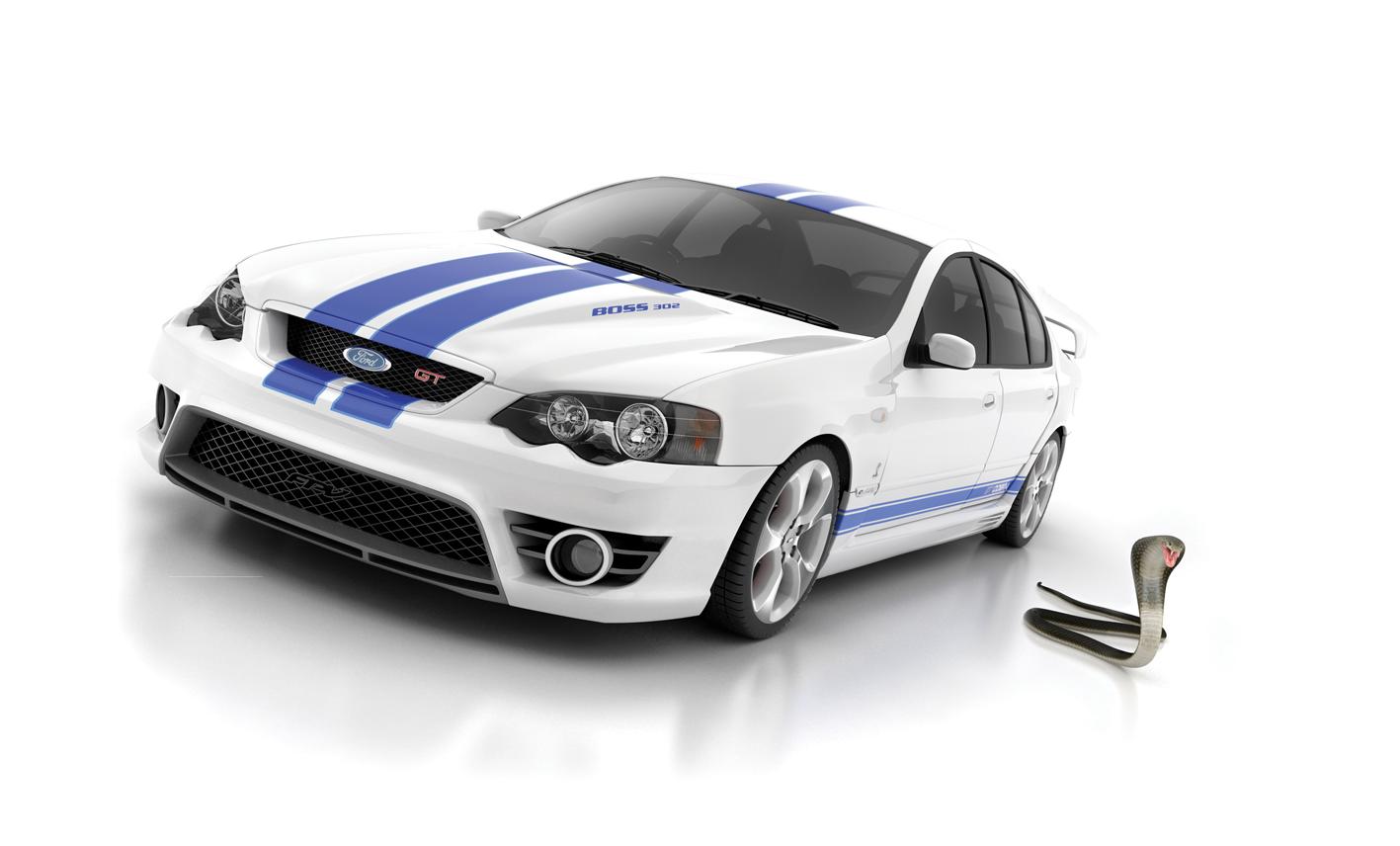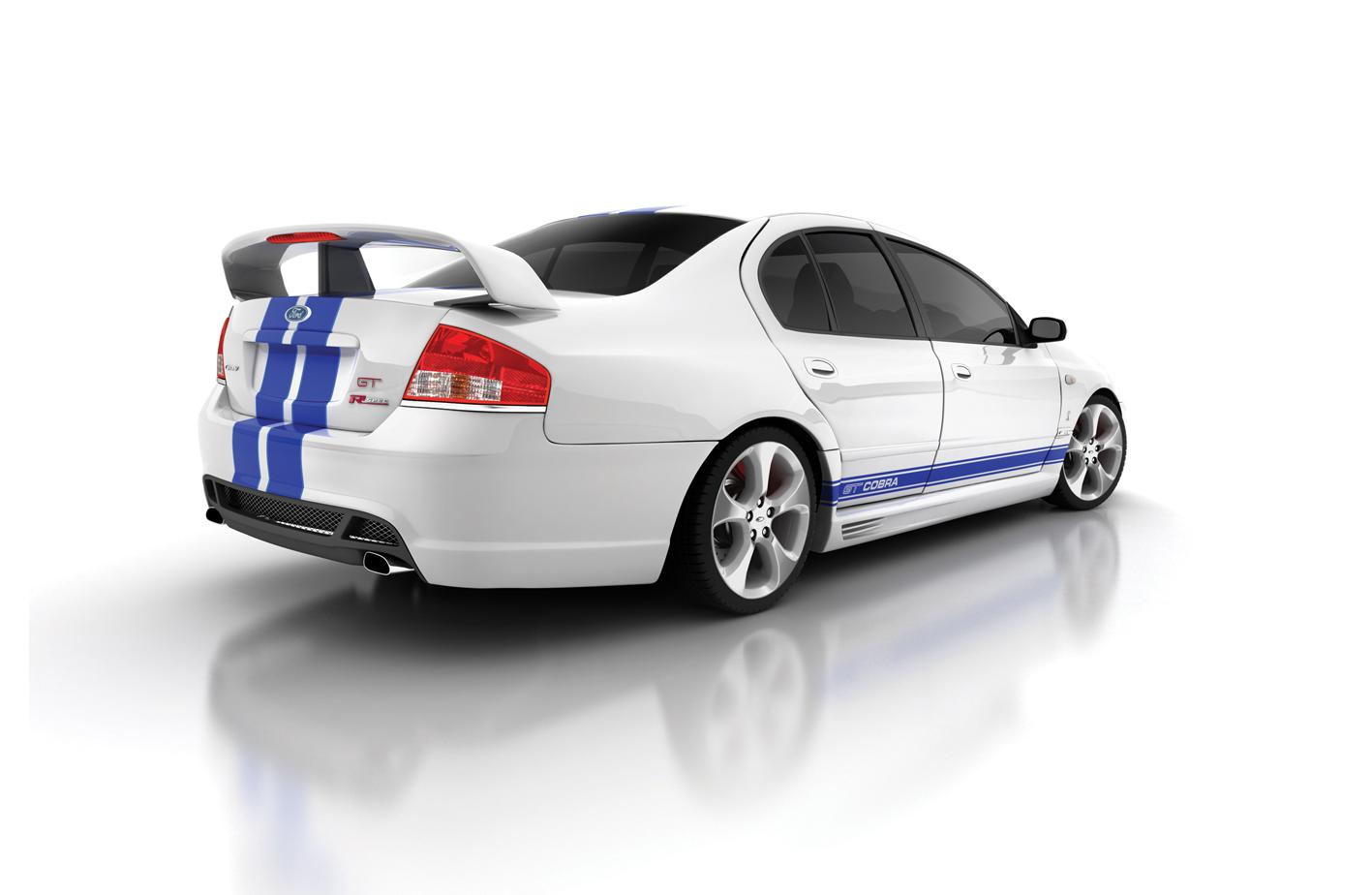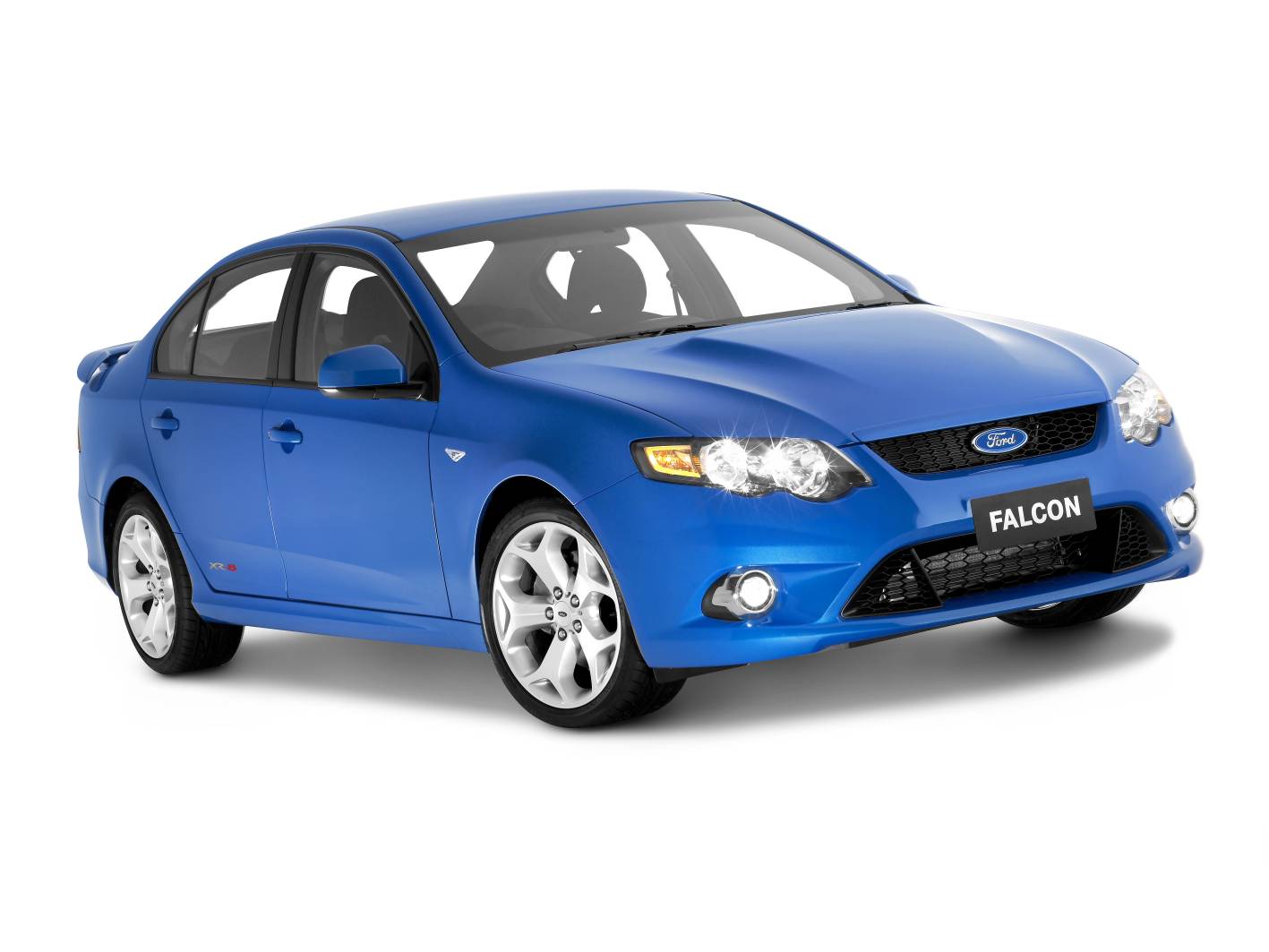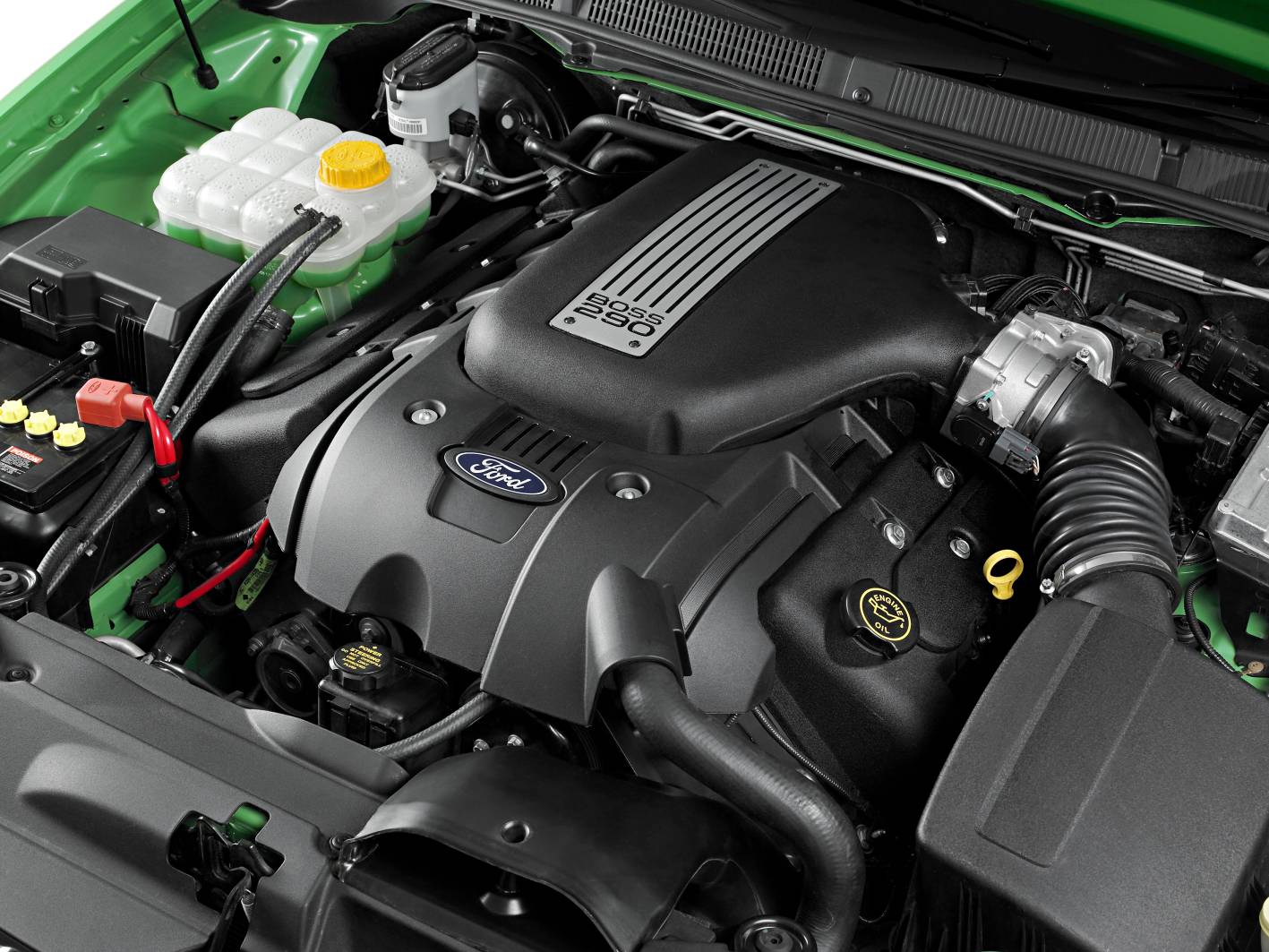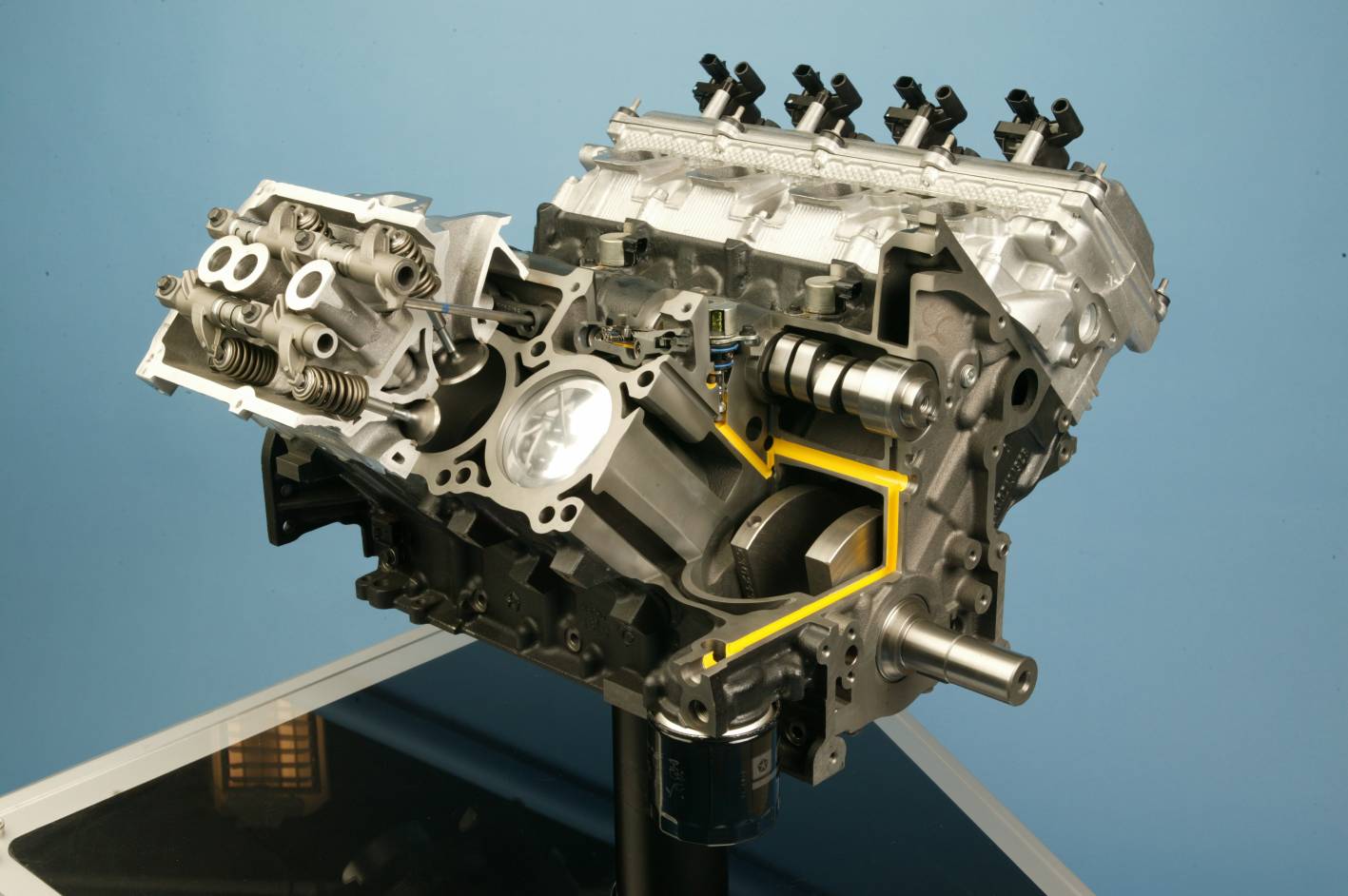Introduction
The Boss 290 was a 5.4-litre 90-degree V8 engine which was introduced in the FPV BA GT and FPV BA Pursuit in 2003. The Boss 290 V8 engine was a member of Ford’s Modular V8 engine family and closely related to the 5.4-litre Boss 260 V8 engine that was also introduced in the Ford BA Falcon XR8. Key features of the Boss 290 V8 engine included its:
- Cast iron block;
- Forged steel crankshaft; and,
- Aluminium alloy cylinder head with double overhead camshafts and four valves per cylinder.
Unlike the related Barra 220 V8 engine, the Boss 290 V8 engine did not have variable cam timing (Ford’s ‘VCT’). The Boss 290 V8 was replaced by the supercharged 5.0-litre ‘Miami’ V8 engine.
| Model | Engine | Trans. | Peak power | Peak torque | Years |
|---|---|---|---|---|---|
| FPV BA GT, FPV BA Pursuit |
5.4-litre petrol V8 | 5sp man., 4sp auto |
290kW at 5500rpm | 520Nm at 4500rpm | 2003-04 |
| FPV BA GT, FPV BA Pursuit, FPV BA Super Pursuit |
5.4-litre petrol V8 | 6sp man., 4sp auto |
290kW at 5500rpm | 520Nm at 4500rpm | 2004-05 |
| FPV BF GT, FPV BF Pursuit, FPV BF Super Pursuit |
5.4-litre petrol V8 | 6sp man., 6sp auto |
290kW at 5500rpm | 520Nm at 4500rpm | 2005-07 |
| FPV BF Force 8 | 5.4-litre petrol V8 | 6sp auto | 290kW at 5500rpm | 520Nm at 4500rpm | 2006-07 |
Block
The Boss 290 V8 engine had a cast iron block with 90.2 mm bores and a 105.8 mm stroke for a capacity of 5408 cc. The Boss 290 V8 had a deep-skirt design whereby the block extended below the crankshaft centreline and enclosed the crankshaft – this enabled the fitment non-structural, low-profile oil pan with a single plane oil seal and fully enclosed, one-piece rear main bearing seal. This oil pan was shared with the Boss 260 and included a front well to clear the cross-member and to provide adequate ground clearance; it was also tested for oil starvation when cornering.
Crankshaft and connecting rods
Like the Boss 260 V8, the Boss 290 V8 engine had a forged steel crankshaft. For the Boss 290, however, the crankshaft underwent a ‘special balancing process’ at FPV prior to assembly to match the unique pistons and connecting rods. According to FPV, this balancing process provided greater refinement and reduced stress on engine components at all engine speeds.
The Boss 290 engine had locally sourced, high performance tri-metal main bearings and big-end bearings. The six-point main bearing locations consisted of two cross-bolts, two vertical bolts and two vertical locating dowels for each main bearing cap – these provided greater rigidity and more precise location than a conventional six-bolt mounting.
Like the Boss 260, the Boss 290 V8 engine had sintered connecting rods with fracture-split big-ends. For the Boss 290, however, each connecting rod was:
- Re-engineered to accommodate the larger gudgeon pin; and,
- Re-shaped to clear the larger gudgeon support pillars inside each piston.
Whereas the Boss 260 V8 engine had a compression ratio of 9.52:1, the Boss 290 was fitted with high performance pistons that had domed tops to raise its compression ratio to 10.5:1. These high performance pistons had a larger gudgeon pin, larger internal pillars to support the gudgeon pin and a special ring pack due to the higher compression, power and torque loads. According to FPV, the top piston ring was optimised for high engine speeds, higher compression and stringent internal oil consumption standards. As a result of its high compression ratio, the Boss 290 engine required 95 RON premium unleaded petrol.
Cylinder head and valvetrain
Shared with the Ford Mustang Cobra R, the aluminium cylinder for the Boss 260 and Boss 290 V8 engines was cast by Ford USA and machined by Cyl-Tech Manufacturing. The cylinder head for the Boss 290 engine was mounted on a high-compression Terminator head gasket that was originally engineered for supercharged applications and provided extra margins of sealing strength for the naturally aspirated Boss 290. The cylinder head bolts for the Boss 290 engine:
- Were made of a special high-tensile material;
- Were stretched under tension for maximum strength and head gasket stability; and,
- Had an enlarged bolt head surface to spread torque loads over a larger area.
Camshafts
Like the Boss 260, the Boss 290 V8 engine had hollow double overhead camshafts (DOHC) per cylinder bank that were chain-driven and had a hydraulic chain tensioner for each timing chain. The camshafts actuated the four valves per cylinder – two intake and two exhaust – via roller finger followers, with ball tip hydraulic lash adjusters used to maintain zero valve clearance.
The high-lift intake and exhaust camshaft profiles for the Boss 290 V8 engine were shared with the Ford Mustang Cobra R, including Ford Racing Performance Parts (FRPP) FR500 exhaust rocker. For the Boss 290 V8 engine,
- The stainless steel ‘Ford Motorsport’ valves were produced by Ferrea and had
- a higher Collet groove for the increased cam lift;
- a 30 degree back cut on the seat area to increase airflow in the port area; and,
- tulip design stems;
- The intake valves had a 37.0 mm diameter, while the exhaust valves had a 30.0 mm diameter;
- Intake valve lift was 13.0 mm (compared to 10.0 mm for the Boss 260) for improved inlet flow, faster response and freer revving;
- Exhaust valve lift was 12.0 mm (compared to 10.0 mm for the Boss 260) for more efficient exhaust gas clearance; and,
- Due to the increased valve lift, the Boss 290 engine had longer valve stems and springs. The bases of the valve springs were also re-profiled to improve gas flow in the port area; and,
- Longer finger followers were used to match the higher cam profiles and provide accurate valve control throughout valve lift. Furthermore, the camshaft cradle was modified to provide extra clearance for the finger followers.
For the Boss 260 and 290 V8 engines, the cam cover was made form magnesium to reduce mass and was isolated from vibration by rubber grommets. For rigidity, reinforcing ribs were cast into the cam cover and a structural baffle plate was fitted in the underside of the cover.
For the BF Boss 290 V8 engine, camshaft timing changes were introduced for a lower idle speed and more stable idle.
Intake
Whereas the Barra 220 V8 engine had a variable length intake manifold, the Boss 260 and Boss 290 V8 engines had a ‘high-rise’ alloy intake manifold which featured tuned-length intake trumpets to match the straighter inlet port. The cast alloy plenum cover was manufactured in Australia and profiled for optimum breathing, while the high volume conical filter was shared with the Ford Mustang Cobra.
For the BF Boss 290, a dual-entry ram airbox was adopted which was first introduced on theFPV F6 270 Turbo engine. The dual-entry ram airbox:
- Increased airbox volume from five cubic litres to 13 litres;
- Provided more efficient airflow to the induction system;
- Reduced induction noise; and,
- Offset the effect of the increased exhaust back pressure necessary to reduce drive-by noise below 75 dB in compliance with ADR 83/00 (see ‘Exhaust’, below).
Injection and ignition
The Boss 290 V8 engine had sequential multiport fuel injection via eight solenoid-operated fuel injectors. Compared to the Barra 220 engine, however, the Boss 290 engine had a unique fuel rail, upgraded fuel injectors and upgraded fuel lines. A constant fuel pressure drop was maintained across the fuel injectors by the fuel pressure regulator which was positioned upstream from the fuel injectors on the fuel injection supply manifold.
The Boss 290 V8 engine had an electronic ignition system with eight ignition coils and a compression ratio of 10.5:1; the firing order was 1-3-7-2-6-5-4-8. For the BF Boss 290 engine, an additional knock sensor was introduced which enabled a change in ignition timing strategy for more accurate spark control, improved fuel economy and greater refinement.
Exhaust
The fabricated stainless steel exhaust headers for the Boss 260 and Boss 290 V8 engines had a 1 7/8 inch diameter.
For the Boss 290 engine in the FPV BF GT and GT-P, a new twin-exhaust system was introduced which had four-into-one extractors from each bank of cylinders joining into a twin 2 1/4 inch exhaust with an intermediate silencer box. The exhaust gases passed through new tri-flow silencers – necessary to comply with the ADR 83/00 drive-by noise regulations – before exiting via the six-inch twin-outlets.
Ford Boss 290 V8 engine
Ford FG Falcon XR8: Boss 290 (2009-10)
It is understood that the Boss 290 engine for the Ford FG Falcon XR8was largely unchanged as that used in FPV’s BF.I range. For the FG range, however, a new oil pan and exhaust manifold were introduced to accommodate changes in the FG Falcon’s body structure.
The FG Falcon XR8 was fitted with a Semi Active Muffler (SAM) which used a cylindrical valve that was mounted on the muffler end-plate and protruded inside the intermediate muffler. At low engine speeds, the spring-loaded valve was closed to force exhaust gasses through a series of baffles in the intermediate muffler. At engine speeds above 2800 rpm, however, exhaust gas back pressure caused the valve to open, bypassing the baffles and providing a louder exhaust note.
| Model | Engine | Trans. | Peak power | Peak torque | Years |
|---|---|---|---|---|---|
| Ford FG Falcon XR8 | 5.4-litre petrol V8 | 6sp man., 6sp auto |
290kW at 5750rpm | 520Nm at 4750rpm | 2009-10 |
FPV BF Boss 302 V8 engine
FPV BF Boss 302 (2007-08)
Released in November 2007 for FPV’s BF.II range, the Boss 302 engine was developed to increase peak power and torque in the ‘mid to upper engine speed range without affecting exhaust emissions or urban fuel economy’. As such, changes for the Boss 302 engine included:
- New inlet and exhaust camshaft profiles to increase inlet valve lift and duration;
- Changes to the valves and valve springs to accommodate the increased valve lift;
- A higher compression ratio of 10.8:1 (previously 10.5:1) which increased combustion efficiency; and,
- A revised engine calibration revised to optimise the new components.
In contrast to the paper-style panel air filter for the BF Boss 290 engine, the FPV BF GT Cobra 302 had a reusable BMC high-flow panel air filter.
| Model | Engine | Trans. | Peak power | Peak torque | Years |
|---|---|---|---|---|---|
| FPV BF GT, FPV BF Pursuit, FPV BF Super Pursuit |
5.4-litre petrol V8 | 6sp man., 6sp auto |
302kW at 6000rpm | 540Nm at 4750rpm | 2007-08 |
| FPV BF Force 8 | 5.4-litre petrol V8 | 6sp auto | 302kW at 6000rpm | 540Nm at 4750rpm | 2007-08 |
FPV FG Boss 315 V8 engine
FPV FG Boss 315 (2008-10)
Introduced in FPV’s FG range, the Boss 315 V8 engine introduced the following changes (relative to the Boss 290):
- A new camshaft profile and timing for higher lift and extended duration;
- A strengthened piston assembly;
- A higher compression ratio, understood to be 10.8:1 (though FPV sources also list 11.0:1);
A new upper intake manifold plenum chamber for optimised air flow; - A twin plate throttle body for improved volumetric efficiency and reduced pressure loss through the induction system;
- A new high-flow ‘straight through’ twin exhaust system and stainless steel exhaust manifolds to reduce exhaust back pressure;
- Maximum engine speed increased from 6000 rpm to 6500 rpm; and,
- To reduce parasitic losses, changes to the water pump and the introduction of an oil pan-mounted windage tray.
| Model | Engine | Trans. | Peak power | Peak torque | Years |
|---|---|---|---|---|---|
| FPV FG GT, FPV FG Pursuit |
5.4-litre petrol V8 | 6sp man., 6sp auto |
315kW at 6500rpm | 551Nm at 4750rpm | 2008-10 |
FPV FG Boss 302 V8 engine
For FPV’s FG range, the Boss 302 engine had the same properties as the Boss 315 engine (detailed above), but with a 500 rpm lower redline. Unlike the BF Boss 302, the FG Boss 302 engine had a paper-style panel air filter.
| Model | Engine | Trans. | Peak power | Peak torque | Years |
|---|---|---|---|---|---|
| FPV FG GS, FPV FG GS Ute |
5.4-litre petrol V8 | 6sp man., 6sp auto |
302kW at 6000rpm | 540Nm at 4750rpm | 2009-10 |
